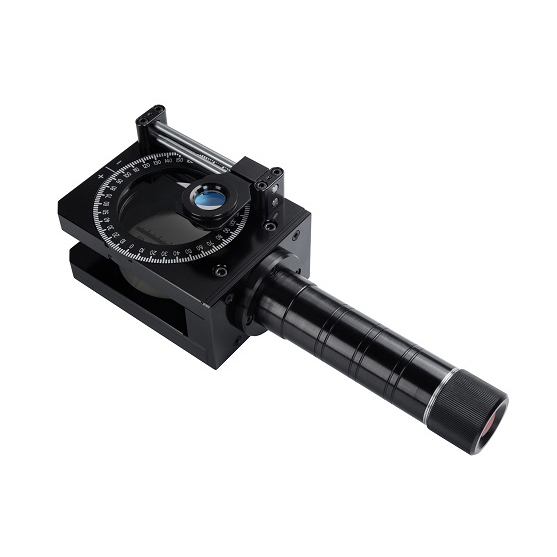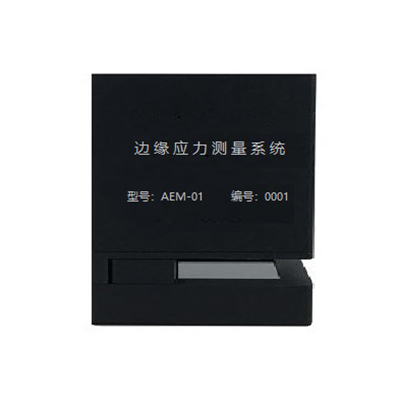Edge Stress Meter
Polarization analyzer clear aperture: 70mm
Light source: LED light
Power: 2 #1 dry batteries
Polarization analyzer scale dial resolution: 2 °
Height of measuring area: 30mm
Polarizer axis is 45 degree; Quarter-wave direction of slow ray is 45 degree. Analyzer axis is -45 degree. The sample is put between polarizer and quarter-wave plate.
Without sample, the view is dark. When the glass with main stress axis vertical is inserted, a black isochromatic fringe appears, which is the location of zero stress. The optical path difference caused by the main stress can be measured in this way: rotate the analyzer till the interference color disappears (if the light path retardation deviation is zero, the color is black). The optical path difference of the measuring point can be calculated with the rotation angle.
T:The optical path difference of the measured point
λ:Wavelength of light, 560nm
θ:The rotation angle of the polarization analyzer
The rotational polarization method itself can only measure the decimal order value of the optical path difference, and the integer order number of fringes is determined after determination of the zero-order fringes. The actual value of the optical path difference is the sum of the integer order number of fringes and the decimal order value of optical path difference.
n:Integer order number of fringes
Power: 2 batteries
Length: 300 mm
Width: 100 mm
Height: 93mm
Light Source: LED
Resolution: 2 degree
Measure Thickness: 28 mm






